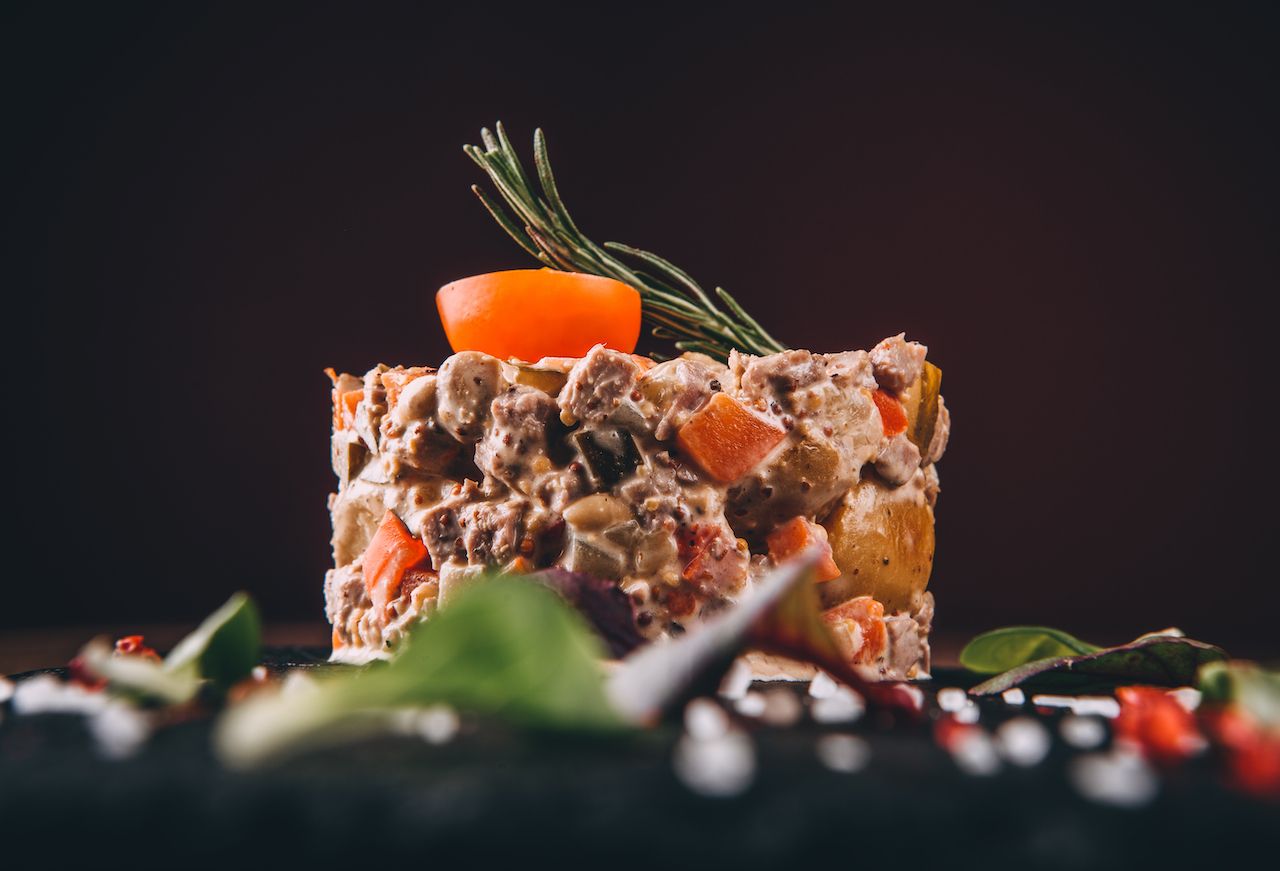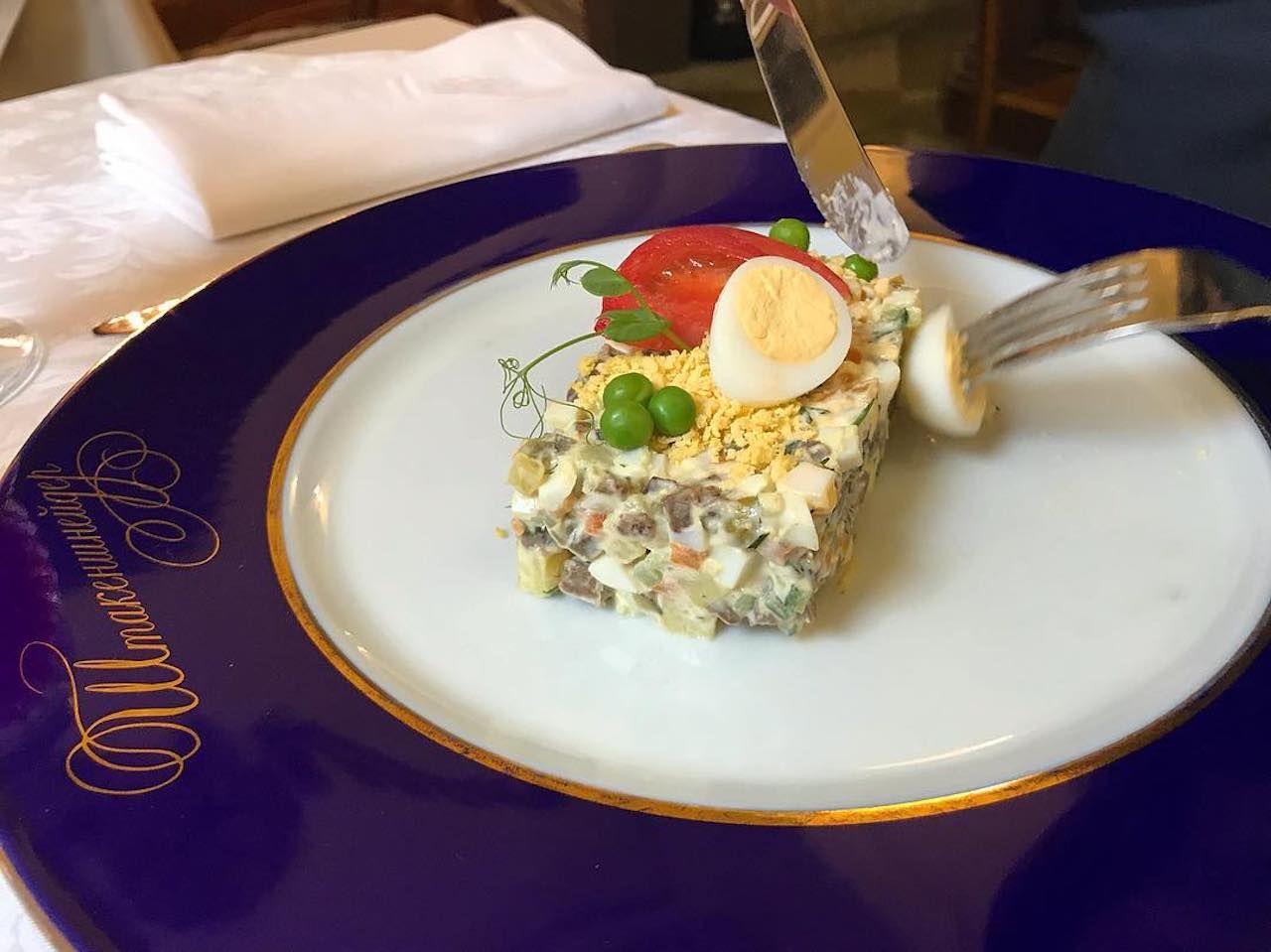When people think of traditional holiday meals in Russia, caviar, blinis (Russian pancakes), pirog (baked dough with a sweet or savory filling), and aspic (meat-filled jello) come to mind. Yet the dish that must be included in any Russian celebration is actually French Olivier salad.
French Olivier salad is named after Lucien Olivier, a chef of French descent who owned The Hermitage restaurant in Moscow in the 19th century. According to one legend, the dish came about when Olivier made “Mayonnaise from Poultry” with mayonnaise, partridge, grouse, veal tongue, black caviar, and boiled crawfish tail. In the center, he made a pile of hard-boiled eggs, pickles, and boiled potatoes. When it came time to eat, to the chef’s horror, diners ruined his culinary masterpiece by mixing all of the food on their plates into some kind of salad.


